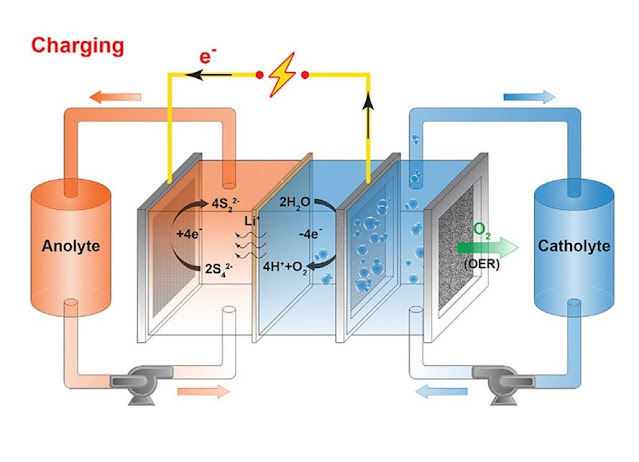Pour Point Depressants: How Pour Point Help Flow of Heavy Fuels in Cold Temperatures
What
are Pour Point Depressants?
Pour point depressants (PPDs) are added to heavy fuel oils and other fluids to
lower their pour point - the temperature at which they will still flow. PPDs
are surface active polymeric additives that physically adsorb onto the surfaces
of the solid wax crystals forming in fuels during cooling. This adsorption
process prevents the wax crystals from packing tightly together and allowing
flow to stop. Different types of PPDs work through various mechanisms but all
function to disrupt crystal formation and induce size and shape changes in wax
crystals.
PPDs and Their Use in Fuels
Heavier fuel oils like diesel, furnace oil, marine fuels etc. contain high
amounts of long chain paraffinic components that tend to crystallize out of
solution at temperatures above 0°C. The wax crystals eventually form a network
that immobilizes the fuel and causes it to solidify or gel. This makes the fuel
difficult to pump and use especially in cold climates. PPDs are routinely added
to such heavier fuel oils during handling and storage to depress the pour point
by 15-30°C below the cloud point temperature. This ensures the fuel remains
pumpable and usable down to much lower temperatures than without any additive
input. Different industries rely on PPDs for reliable operation of equipment in
cold weather conditions.
How PPDs Work at Molecular Level
At a molecular level, Pour
Point Depressants work by selectively adsorbing onto the growing lattice
planes of wax crystallites as they begin to form during cooling. The large,
flexible and polar molecular structure of typical PPDs favors such surface
activity. Their adsorption physically hinders further crystal growth and
promotes the formation of smaller crystals with irregular shapes and edges
compared to untreated fuels. Some PPD types may even get embedded within the
crystal structure. This prevents tight packing of wax crystals even at low
temperatures, keeps the network disruptible and maintains fluidity above the
pour point. PPD molecules essentially function as crystal deformers or
modifiers rather than inhibitors. Continuous shearing forces in fueled equipment
also help break up re-forming crystal networks aided by PPDs.
Impact of PPD Treatments
The ability of a PPD to depress pour point is determined by various factors
like dosage rate, compatibility with target fuel, crystallization kinetics and
thermal history. Commonly 15-30% dosage by weight of the total wax content
yields 10-30°C pour point depression depending on fuel properties. Some key
impacts of effective PPD treatments include:
- Cold weather operability: Ensures equipment fueling, combustion and transfer
systems remain functional below usual cloud/pour points. Examples are fishing
trawlers, mining/drilling sites, heating fuels in sub-zero regions.
- Flow assurance: Maintains pumpability of pipeline fuels over hundreds of
miles including at high altitudes or sea depths where temperatures are lower.
Critical for offshore platforms.
- Storage and handling: Allows use of existing storage tanks and containers
all-year without wax precipitation problems clogging filters or valves.
- Material compatibility: Proper PPD selection prevents issues like deposits,
corrosion or phase separation in fuels and fuel system components.
- Performance consistency: Crystallization effects are minimized providing
steady fuel properties and engine/plant output in cold temperatures as well.
Types of PPDs and Their Features
There are different types of chemical PPDs developed by formulators based on
fuel application needs:
- Polyethylene/PAO (polyalphaolefins): Low cost traditional PPDs widely used
but can oxidize at high temperatures affecting performance.
- Polyisobutylene: Effective pour point depressant, better oxidation stability
than PE/PAO for diesel engine use. Less compatible in some residual fuels.
- Polymethacrylates: Provide broader pour point range, better low-temperature
fluidity. Higher cost and compatibility issues reported.
- Copolymers: Combination of PE/PAO or other polymers increase effectiveness,
often used as blends for enhanced properties.
- Multifunctional: Contains additional functions like dispersancy, metal
passivation or biocidal properties in a single PPD additive.
Choice depends on fuel properties, intended PPD impacts, dosage economics and
equipment/location specific service conditions. Proper evaluation ensures right
PPD selection.
pour point depressants are a crucial additive component for
assuring the operability and performance consistency of heavy fuel oils and
other material in cold weather. Through specialized molecular interactions,
PPDs help prevent wax crystallization based flow problems and keep treated
fuels pumpable and usable at lower temperatures than specified. Correct PPD
selection and dosage optimization ensures most effective cold weather
performance for equipment across industries relying on fuel transport and
combustion. Proper additive treatments are thus vital especially in colder
parts of the world.
Get more insights on - Pour
Point Depressants
Get More Insights—Access the Report in the Language that Resonates with You.
About Author:
Money Singh
is a seasoned content writer with over four years of experience in the market
research sector. Her expertise spans various industries, including food and
beverages, biotechnology, chemical and materials, defense and aerospace,
consumer goods, etc. (https://www.linkedin.com/in/money-singh-590844163)



Comments
Post a Comment